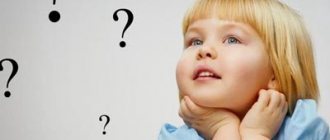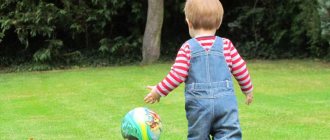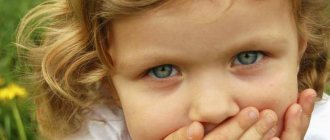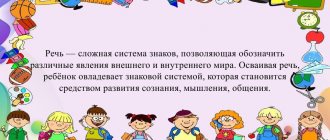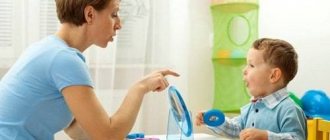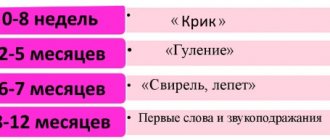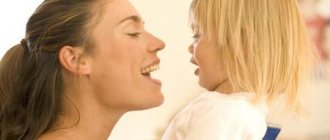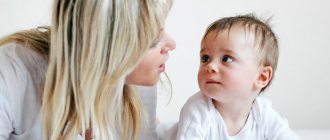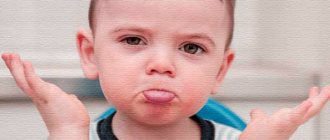Physical parameters
It's worth starting with the physical parameters. They are usually measured by a pediatrician in a children's clinic, but mom or dad can take measurements themselves at home using a stadiometer, baby scales and a measuring tape.
Average values for the main parameters have been established. The average weight of a child varies from 10.2 to 11 kg, height - from 80 to 82.5 cm, chest circumference - from 50 to 50.5 cm, and head circumference - from 46 to 47.5 cm. These are average figures, but the norms for boys and girls are slightly different. The table below shows the values for girls and boys:
.
| Estimated parameter | Values for boys (limits of norms) | Meaning for girls (limits of norms) |
| Height | From 76.8 cm to 87.8 cm | From 74.8 cm to 86.6 cm |
| Body mass | From 8 kg 800 g to 13 kg 700 g | From 8 kg 100 g to 13 kg 300 g |
| Chest circumference | From 47.3 cm to 54 cm | From 47.7 to 53 cm |
| Head circumference | From 44.6 cm to 50 cm | From 43.4 cm to 49 cm |
Important! Take into account possible errors in measurements due to human factors, the characteristics of the child’s physical condition at the time of measurements and the characteristics of the measuring devices used. Typically deviations are up to 3-5 mm and up to 100-300 g.
Physical skills
Physical development at one and a half years is rapid: the baby grows stronger, masters new skills, demonstrates the ability to better control his body and control his movements.
A one and a half year old child should be able to:
- stand confidently on your feet;
- walk well and try to run;
- move around or step over objects;
- walk confidently while holding something in your hands;
- sit on and get up from a chair without support;
- climb onto a sofa (armchair, chair) and get off it independently;
- climb up and down small steps (holding the railing, an adult’s hand, or independently);
- play with the ball: throw it up or down, kick it;
- squat and calmly rise from your haunches;
- lean forward for an object, pick it up from the floor;
- stand on tiptoes, trying to reach something;
- change directions of movement;
- turn in different directions.
Important! At one and a half years old, a child may still be a little clumsy and fall. This is completely normal and should not be a cause for concern.
What should a 1.5 year old child be able to do?
Hello, dear mothers, fathers, grandparents! Do you notice how quickly time flies? It seems that just recently, just the other day, you were singing Happy Birthday, and there was a one proudly displayed on the cake. But six months have passed since then, and today your baby is already 1.5 years old. His first hesitant steps are still fresh in my memory, but now it is sometimes difficult to catch up with him. This is a completely independent person with his own tastes, desires and requirements. Today we will tell you about what a 1.5 year old child should be able to do, what his intellectual and physical development should be, and what everyday skills he should have. This will tell you what you need to pay attention to so that your little one develops faster and delights you with new achievements every day.
Physical development of the child
At one and a half years old, a child can already stand up independently from a lying position on his stomach or back. When walking, he confidently places his legs, without spreading them too wide, as before. His arms, which he had previously held at shoulder level, trying to grab onto something and maintain balance, were now lowered along his body. Features of physical development during this period include the following:
- The baby walks not only in a straight line, but also in a circle, bypassing various objects.
- He can step over small obstacles on his way - however, so far only with an extended step.
- He is able to walk along a surface located at a slight slope, as well as along a children's ladder.
- The baby happily rolls a stroller in front of him or pulls his favorite car on a string.
- The child can sit on the chair himself and then get up from it.
- He can throw the ball forward, up, down.
- Can bend, squat, turn, and tries to jump.
- Able to independently climb onto low chairs or sofas, as well as adult chairs.
For safety reasons, it is necessary to trace all possible routes of movement of the baby and, if possible, remove dangerous objects. Make sure that your child does not bump into buckets or bowls of water, rugs that he could get caught on and fall on, mops, brooms and other objects that could cause him harm.
Intellectual and cognitive development
A child of one and a half years is a real explorer. He is interested in literally everything he sees: what is in the closet, what is hidden in the box, how tightly the cat’s tail is held. He pays attention to the actions of adults and other children. He is subject to emotions: the baby is upset when parting with his mother and rejoices when he meets.
What other features of intellectual, emotional and cognitive development can be noted in a child at this age?
- The child already understands the shapes of objects and can distinguish a cube from a ball. He is able to select an object that matches the shape of a hole on a logic toy;
- Is oriented in size, can distinguish and show small and large things, tries to assemble a pyramid, selecting parts by size;
- Begins to understand colors, can present an object or toy of the desired color at the request of an adult;
- Tries to draw, leaving lines, zigzags, ovals on paper using a pencil or felt-tip pen;
- Likes to listen to music, reacts differently to fast and slow melodies, tries to perform some movements - dances;
- He is interested in books and knows how to turn pages. When interested in a picture, he points his finger at it and looks questioningly at the adult;
- He loves having fairy tales read to him. He is happy when the same thing is repeated often. Can show fairy tale characters in pictures.
Adults need to pay more attention to educational games with a one and a half year old baby. For example, from cubes you can build not only a primitive tower, but also a house, a fence, or a car.
Activities are useful for developing fine motor skills. You can buy a bright plastic box at the store or build it yourself from cardboard boxes. Place small toys, various small household items, and natural materials in it - pine cones, acorns, chestnuts. The baby will be happy to sort out objects. Children as young as 1.5 years old love to look at the jewelry in their mother’s box or multi-colored buttons and spools of thread. The boys are already interested in the nails, screws and nuts in their father's supplies.
When allowing your child to sort through small things, you should be extremely careful and keep an eye on him. At this age, for a child, the mouth is still the main organ of cognition, and there is a great danger of a foreign body getting into the respiratory tract. Nevertheless, you should not go to extremes and forbid your child to be interested in small objects. The situation just shouldn't get out of control.
Speech development of a child at 1.5 years old
A 1.5 year old child’s speech develops at a rapid pace. In addition to the words “mom”, “dad”, “baba”, “give”, “na”, the baby can already indicate some actions or objects using onomatopoeia. “Am-am” - eat, “nyau” - cat, “bi-bi” - car and others. Adults should not use such primitivisms when communicating with children. The baby must learn the real names of objects and actions.
At one and a half years old, the toddler already speaks up to 40 simplified words, and knows, but cannot pronounce, much more. The so-called passive vocabulary is being accumulated. In addition, the following features of speech development can be noted:
- The child understands the meaning of some sentences, can remember and perform two simple actions, for example: “take the doll and put it in the crib”;
- Knows several parts of the body, shows them at the request of an adult;
- Listens carefully to the words and phrases spoken by adults and tries to imitate;
- Speech is accompanied by movements, gestures and facial expressions.
The speech development of a 1.5-year-old baby is facilitated by constant active communication with adults. During walks, be sure to talk with your child, name objects, and use adjectives.
Children really love small scenes with toys that adults act out in front of them and try to take part in them. For example, sit the animals at the table and give them tea, comb and dress the doll, and take it for a walk.
Household skills
At one and a half years old, a child develops a desire to do everything on his own. He tries to imitate the behavior of adults: if mom wipes the dust or washes the dishes, then he also wants to take a rag or sponge; if dad hammers nails, the baby reaches for the hammer. In no case should a child be prohibited from doing adult work; on the contrary, this should be encouraged in every possible way: give a small broom or hammer, show how to perform the actions correctly.
Other everyday skills mastered by a baby at one year and six months include:
- The child knows how to take off some items of clothing - for example, a hat, socks, unbuttoned shoes or a jacket;
- The baby drinks from a cup independently;
- He knows how to hold a spoon - albeit in his fist - he eats puree himself, tries to eat liquid food;
- He likes to wash himself, he puts his palms under the water, and tries to dry himself with a towel;
- Tries to communicate with sounds or gestures about his physiological needs, does not like to walk unkempt.
A one-and-a-half-year-old toddler can already clean up his toys on his own and knows where to store them. At this age, you can instill the first skills of brushing your teeth - of course, without using toothpaste.
So, dear adults, we are convinced that a 1.5-year-old baby is already a completely independent person whose main task is to understand the world and acquire new knowledge and skills. And you need to pay as much attention as possible:
- acquiring new skills in everyday life, teaching the child to be independent;
- developing his speech abilities through conversations, reading books;
- intellectual development - with the help of educational games;
- maintaining physical fitness by organizing outdoor games for your baby.
Well, does the development of your little one correspond to our recommendations or even ahead of them? We are very happy for you! If your baby hasn’t mastered everything yet, don’t be upset. On our website you can get a lot of information about how to deal with your child and what to give priority to. Read, try, and you will succeed!
We look forward to your feedback, comments and suggestions. If our articles are interesting to you, tell your friends about them.
We wish you every success! Until next time!
Intellectual abilities
Intellectual development also proceeds rapidly, the baby absorbs everything like a sponge, his ability to learn is very great. What should a one and a half year old baby be able to do? He is capable of:
- assemble, observing the dimensions of the rings, simple pyramids (of two or three elements);
- carry objects with you on strings;
- put items in a drawer (box, basket) and take them out;
- distinguish between two or three colors;
- point to the objects being asked about and distinguish between them;
- try to sort something by colors, shapes, sizes;
- turn pages (paper or thick cardboard);
- look at images;
- detect identical or very similar objects;
- draw straight or curved lines, ovals and circles (uneven) with crayons or pencils;
- work with the sorter, placing elements in the holes;
- think through a sequence of actions (for example, stand on something in order to later get the object);
- depict some actions (reading, sleeping);
- repeat after adults, your peers;
- build turrets from two or three elements;
- use one object to reach another.
Speech skills
Vocabulary can include 10–40 active (consciously used) words. A child can learn to put individual verbal elements into phrases, but they can only be understood by parents. Passive vocabulary is more extensive. The baby understands many words and reacts to them, but does not pronounce them.
But not all children are able to speak at the age of one and a half years, and the absence of speech, peculiar babbling or strange sounds is a variant of the norm. Boys start speaking later than girls. If the baby understands you and responds adequately to speech, this indicates normal development.
Speech skills
By the end of the first half of the second year of life, children have certain speech skills. Many parents are most concerned about this area of development, since all children do not start talking at the same time. To answer the question of what a child should be able to say at 1.5 years old, you need to know that there is passive speech (those words that he understands, but does not yet pronounce) and active (what he pronounces or tries to pronounce).
Consider the table with average speech development indicators for children of this age.
| Passive speech | Active speech |
| At the request of an adult, points to objects, toys, body parts. | Pronounces about 30 simple words (they may not be quite clear to him). |
| Performs various actions upon request (don’t touch, close, take, drink, eat, etc.). | Answers questions using familiar words. "And who is it?" - the adult points to the cat. The child answers: kitty. |
| Understands the meaning of many sentences (Look, the butterfly is flying! Dad came home from work, let's go meet him!) | Imitates phrases. Trying to construct a simple phrase. For example: “This is mom,” “Give it to me.” |
It is necessary to understand that a child’s speech is formed mainly by imitating what he hears. If you do not talk to your baby and do not say the names of objects, actions, animals as often as possible, then he will not speak for a very long time. The words that children pronounce at this age are greatly distorted due to poor pronunciation, but basically these are the words that the child constantly hears.
What speech development exercises can help?
- To enrich the passive vocabulary, you should simply often name the things that the child manipulates or the actions that he performs (“This is a potty,” “Vanya is jumping,” “Mom is eating”).
- For active speech, use games with pictures and toys. For example, hide a toy dog behind the sofa and say, “Where is the dog? Here she is! I hid behind the sofa!” Same with pictures: “What is this? Apple! Does Dasha like apples? Dasha loves to eat apples!”
- Poems and pure sayings. Rhyme is always easier to remember. Use poems actively, especially those that can be accompanied by actions.
A clubfooted bear is walking through the forest,
He collects the cones and puts them in his pocket.
Suddenly a cone fell right on the bear’s forehead!
The bear got scared and kicked - stomp!
Household skills
At the age of 1.5 years, the child should develop and begin to master the first everyday skills. These include:
- holding a spoon and trying to feed yourself;
- drinking from a children's mug;
- calm response to hygiene procedures, attempts to participate in them or perform some actions independently;
- attempts to undress independently (partially);
- searching for things or objects needed for certain procedures (clothes, towels, toothbrushes);
- fulfilling simple requests (bring something, serve, put down);
- mastering the potty (messages about the desire to relieve oneself or notification of an emptying that has already occurred).
A one-and-a-half-year-old baby strives to actively participate in maintaining everyday life and repeat after his parents. He may try to mop the floor, put toys away in the basket, and perform other daily routine tasks.
Behavior
A child’s behavior changes at one and a half years old. He becomes very curious and strives to always and everywhere explore the world, learn something new and unknown. The baby lacks the instinct of self-preservation, he is not aware of threats and can expose himself to danger. Parents should be more attentive and careful.
At one and a half years old, the child does not yet understand the prohibitions and does what he wants here and now. To stop a dangerous or potentially threatening action, you need to either establish close contact and take the baby aside, or switch your attention to something else (no less interesting and at the same time safe).
The baby begins to show independence and try to perform familiar actions without outside help. He already knows how to demonstrate his mood, empathy, sympathy or hostility, dissatisfaction. Also, at one and a half years old, a child may be capricious for various reasons (most often due to parental prohibitions from doing something interesting). Some kids willingly share or exchange toys, while others, on the contrary, show a sense of ownership.
The child actively imitates adults with gestures, actions and their sequences, facial expressions or sounds. He is sociable, learns to contact and interact with others, not only with his family, but also with strangers. The baby strives to be in the center of events and tries to be included in them. And yet, it is still important for the baby to realize and feel the support or presence of relatives, to whom the attachment is very strong.
Gaming Skills
Through play, children gain basic skills. For adults, play is entertainment, and for children it is an important development tool. By watching your child play, you can understand in what areas he needs help. And by helping him, you contribute to the acquisition of new knowledge and skills.
So, what play actions does a 1.5 year old child perform?
- Displays “adult” activities in the game (feeds toys, puts them to bed, gives them something to drink, combs them, covers them with a blanket).
- Imitates other children (puts sand into a bucket with a spatula, pours liquids from different containers).
- He tries to climb to the surface, substitutes a chair, and selects the objects necessary for the game.
- Builds pyramids and towers.
Many parents, when buying a new toy, simply give it to the child without showing him exactly how to play. This is a mistake, as the child will learn to play it faster and will show more interest if he knows how to use it. Interaction with others is a vital part of children's development. Through communication, the child accepts the experience you have and then reflects this experience, going through his own path of successes and failures.
Interesting educational games for your children:
- “Fishing” - buy fish of different colors or cut them out of plastic, put them in the bath and catch them with a net together with your child, naming the colors and sizes of the fish;
- puzzles - you can buy them or make them from cardboard, on which you need to draw a colorful picture (no need to cut out more than four parts);
- mosaics - first assemble simple shapes (square, triangle), then you can assemble a flower, leaf, tree, etc.; focus on specific shapes and colors;
- “Sort the objects” - draw objects of different colors or similar shapes on cards, show the child how to separate them into groups;
- modeling from salt dough (develops creativity and fine motor skills) - mold various shapes (star, heart, plate, etc.) and then paint them with paints.
The task of parents is to help the child at all stages of growing up, and not to force him to develop the way they would like. Most people dream of being proud of their children, even at 1.5 years old (so small?), but much more important is the health of your baby and his harmonious individual development. To do this, you need to allow the child to explore and learn about the world around him, as only he can.
Differences between girls and boys
Are boys and girls different at the age of one and a half years? Yes, it is around this period that children begin to identify themselves, that is, to primitively realize their gender identity. And at this age, the differences between children of different sexes become more obvious.
Let's look at the main different parameters:
- Motor skills. One-and-a-half-year-old girls have more developed fine motor skills, while boys have more developed gross motor skills. That is, female children are more capable of holding objects in their palms and fingers, sorting them out, rearranging cubes, and assembling pyramids. The boys run and jump great.
- Potty training. Boys show a willingness to control their bladder and bowel movements later in life. And girls at 1 year and 6 months may well be aware of their natural needs and ask to go to the potty.
- Speech development. In it, boys are usually noticeably inferior to girls: they either start talking later or have a smaller vocabulary. This is due to the fact that males have a more developed right brain hemisphere, which is responsible for figurative and spatial types of thinking. And in girls, the left hemisphere is more active and develops better, which is precisely associated with the ability to concentrate on small things and with speech skills.
Question two - first words
A child between the ages of 9 months and 1 year and 2 months usually begins to walk actively. It is at this time that the first words, the first schematic speech appear. Up to a year, these are nouns denoting those people (in some cases, objects) who constantly surround the baby: mother, father, uncle, aunt, woman, grandfather.
Moreover, the little one says words that end in a vowel - it’s easier for him that way. Onomatopoeic words: aw-aw (dog), mu (cow) and so on, are also very easy to produce.
Sometimes words have a very intricate shape and consist of part of a word that denotes an object. For example, “baka” means dog, “isya” means pussy. If it is not just a set of sounds, but a meaningful word, it will be repeated every time the baby sees what he is talking about.
Keep track of which words your child likes. There is a category of children who prefer nouns - this (according to the latest psychological research) suggests that the toddler will have an analytical mind with a bias towards the humanitarian side.
If the baby prefers words denoting action: give me, go away - he will be an active, active person, with a technical mindset. You will see for yourself how much truth there is in this.
Often children generalize several objects under one word, which are completely distant from each other. For example, “yum-yum” can mean both a desire to eat and food or a chewing person. It is important that such words are accompanied by gestures. This means that the child speaks meaningfully and understands his own words, trying to attract your attention.
To the question: “How many words should a child speak at 1.5 years old,” the opinions of experts vary significantly. On average, the vocabulary should be about 30-40 words, including short or schematic words.
Approximate daily routine
At the age of one and a half years, the daily routine is very important, as it disciplines the child and prepares him for the routine observed in kindergarten. The main components are sleep, meals, hygiene procedures, as well as learning about the world around you and new skills.
The table below shows an approximate daily routine for a child aged one and a half years:
| Time | Actions |
| 8:00 | Awakening |
| 8:00-8:30 | Changing clothes, hygiene procedures (washing with warm water, brushing teeth) |
| 8:30-9:00 | Breakfast |
| 9:00-12:30 | Waking period: walk in the fresh air, active games, communication with parents, developmental activities |
| 12:30-13:00 | Preparing for lunch and lunch |
| 13:00-16:00 | Getting ready for bed, daytime rest |
| 16:00-16:30 | Waking up, preparing for afternoon snack and midday meal |
| 16:30-19:15 | Evening period of wakefulness with quiet games and educational activities |
| 19:15-19:45 | Preparing for dinner and the evening meal itself |
| 19:45-20:15 | Communicate with family members in a relaxed environment |
| 20:15-20:45 | Hygiene: bathing (possibly with calm water games), brushing teeth, putting on pajamas |
| 20:45-21:00 | Evening ritual before going to bed |
| 21:00-8:00 | A good night's sleep |
This schedule is approximate. The daily routine should be individual, corresponding to the physiological needs and characteristics of a particular child. So, some children get up earlier, and in this case all the items in the routine will shift.
Sleep Features
A baby's sleep lasts about 12 - 14 hours per year and 5 months (or 6). Daytime rest at this age is usually the only one and lasts two to three hours (a double option is possible - 1-1.5 hours each). At night the baby sleeps 10-11 hours.
At one and a half years old, a child is able to sleep alone in his crib in his parents’ bedroom or in his own children’s room. He no longer wakes up at night, and if he does wake up, he normally falls asleep on his own and does not show anxiety. Some mothers and fathers practice co-sleeping, and it is acceptable if it is acceptable and comfortable for the whole family.
At one and a half years old, difficulty falling asleep may occur due to increased activity. To solve this problem, you need to try to calm the child down before resting, set him up for sleep, choose calm and quiet games that do not excite the nervous system.
Ritual is still important - a special sequence of actions that instills confidence and informs about the approaching sleepy period. This may include bathing and brushing teeth, getting into bed and dimming the lights, reading a book or singing a lullaby, stroking the head, turning off the light (maybe leaving a night light on dimly), and leaving the bedroom.
Physical development
At this age stage, children move a lot and constantly explore space, that is, they already have a sufficient number of physical skills and abilities.
A child aged one year and six months can:
- walk, avoid obstacles, step over objects;
- with the help of an adult, go up and down low steps;
- sit independently, sit on the floor or on a chair;
- pick up and throw toys in different directions;
- tries to run fast;
- drinks from a special children's mug or glass, holds a spoon, tries to eat himself.
At this age, the child is very curious, but also extremely clumsy, and therefore requires constant supervision. To direct his activity in the right direction, use the following games.
- "Repeat after me". Show your child various actions (clap your hands, squat, cover your eyes with your palms, etc.).
- "Catching up." You need to catch dad (mom, grandma, brother, etc.), and then the adults catch the child.
- Swimming. Exercising in water is great for developing gross motor skills and flexibility.
It is worth considering the table with anthropometric indicators. The values are average.
Nutrition
At one and a half years old, meals are either four or five times a day (with a second breakfast or a light snack between breakfast and lunch). The diet includes vegetables, cereals, dairy and fermented milk products, berries and fruits, poultry, meat and fish, vegetable oil, chicken or quail eggs. You should not offer processed foods, sweets, smoked, pickled, carbonated drinks and other harmful foods.
The table shows an approximate daily menu for a one and a half year old baby:
| Eating | Dishes |
| Breakfast | 150 g milk porridge, 50 g steamed omelette, 100 ml fruit juice or baby tea |
| Dinner | 100 ml of vegetable soup, 30 g of boiled grated beets, 50 g of pasta with butter, 50 g of beef puree and 60-70 ml of dried fruit compote |
| Afternoon snack | 150 ml kefir or yogurt, 15-20 g children's cookies (for example, biscuits), 100 g fruit |
| Dinner | 150 g vegetable stew or puree (from zucchini, cauliflower, potatoes, broccoli, carrots), 50 g steamed fish cutlets, 20 g wheat bread, 100 ml baby tea (with milk added) |
Important! The daily food intake is 1000-1200 g.
Walks, outdoor games and hygiene
Games for a year and a half are an effective way to explore the world and learn new skills. With your baby you can play hide and seek, ball, dolls and cars, safe soft and age-appropriate educational toys, search for various objects, and imitate animals. The child will also enjoy rhythmic dancing. And at this age, you can get used to gymnastics, but the exercises should be clear, simple and safe.
You should go for a walk once or twice daily, if the weather permits. On the street, allow your baby to touch new objects, talk about what is happening, visit playgrounds and new places.
As for hygiene, the baby should be taught to wash his face in the morning, wash his hands after going out and before meals, take evening baths, brush his teeth, as well as use his own hygiene products and items (brushes, towels).
Developmental activities
Developmental activities should be daily, comfortable, relaxed and interesting for the baby. You can do:
- modeling from safe soft plasticine or kinetic sand;
- drawing (crayons, finger paints, wax pencils);
- sorting items according to different parameters;
- games with pyramids, sorters, nesting dolls, simple puzzles, cubes;
- studying cards with different images;
- playing children's musical instruments;
- sorting through objects of different shapes under the supervision of an adult (clothespins, hairpins, buttons, cereals are suitable);
- selection of certain items (at the request of mom or dad);
- exploring different colors and textures.
In order for your one and a half year old child to develop harmoniously, be in constant contact with him and study constantly. Talk to your daughter or son more, involve them in conversations. Praise your child for his achievements, help him and allow him to make independent decisions. Give your child time for independent activities and games. And show support, care, affection and love even more often.
Interaction with others
Man is a biosocial being, so he needs society. The emotional and social development of a 1.5 year old child depends on the microsociety in which he grows up. Most often this is a family. Most of the child’s emotional reactions are a reflection of the emotions of the adults close to him.
Pay attention to the norms of social and emotional development of children at this age - this area is key in the formation of a child’s personality.
- Imitating the emotions of adults, accompanied by gestures and facial expressions (he feels sorry - strokes his head with his palm; gets angry - screams, stomps his foot).
- Reaction to the emotions of an adult - distinguishes when he is scolded and when he is praised.
- The child expresses dissatisfaction, cries if he doesn’t like something; laughs if they play with him.
- Reacts to mom or dad leaving and cries.
- Interested in the actions of other people.
- Shows caution when seeing strangers.
- He gets angry if something doesn't work out for him.
- Repeats familiar actions to music.
Activities such as reading a fairy tale before bed, singing songs, lullabies, bathing together, playing together, and listening to pleasant music have a particular impact on the emotional development of children.
